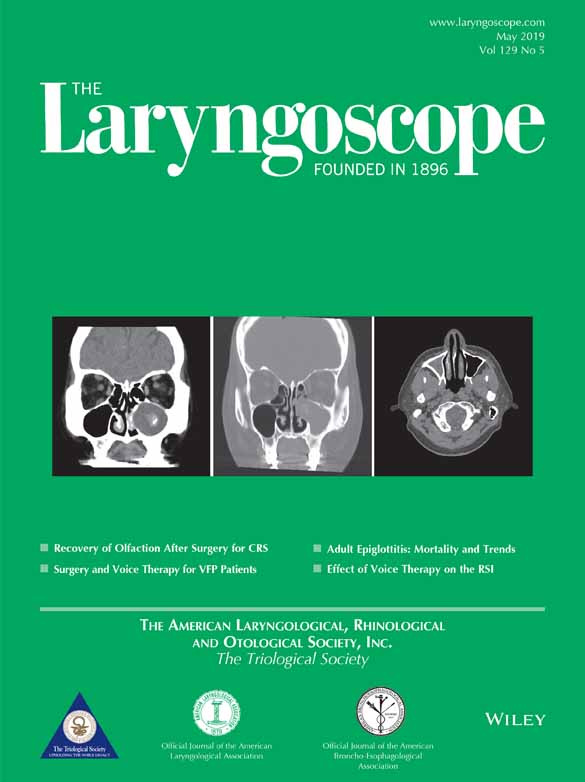Comparing short-term outcomes of surgery and voice therapy for patients with vocal fold polyps
The authors have no funding, financial relationships, or conflicts of interest to disclose.
Abstract
Objectives/Hypothesis
Optimal treatment for patients with vocal fold polyps (VFPs) remains controversial. We compared the short-term outcomes of treatment with voice therapy alone (VT), surgery alone (SUR)m or voice therapy and surgery (VTS).
Study Design
Retrospective case series.
Methods
A retrospective study was performed for patients diagnosed with VFP (International Classification of Diseases, Ninth Revision code 478.4 and Tenth Revision code J38.1) between January 2010 and April 2016. Inclusion criteria were age greater than 18 years and charted evidence of treatment with voice therapy, surgery, or both. Exclusion criteria were history of laryngeal cancer or radiation above the clavicles. Outcomes measured included chart records of lesion absence, persistence or recurrence, and differences between pretreatment and post-treatment Voice Handicap Index-10 and GRBAS (G/grade, R/roughness, B/breathiness, A/asthenia, S/strain) scores.
Results
One hundred twenty patients with VFPs were identified (SUR = 23, 19.2%, VT = 29, 24.2%, VTS = 68, 56.7%). Mean follow-up was 5.5 months. There were no recurrences in 115 patients (95.8%). There was significant improvement from pre- to post-treatment VHI-10 scores in the SUR (mean improvement = 12.5, standard deviation [SD] = 12.7) and VTS (mean improvement = 12.3, SD = 10.3) groups compared to the VT (mean improvement = 2.84, SD = 11.9) group (P = .009). Pre- and post-treatment GRBAS scores did not significantly change in any group.
Conclusions
When using patient-reported outcomes measures, patients with VFPs receive the greatest short-term gains from treatment paradigms involving surgery or a combination of surgery and voice therapy. Voice therapy alone did not result in significant short-term changes. Perceptual voice characteristics did not change significantly for any group. Further research on long-term treatment outcomes for patients with VFPs is needed.
Level of Evidence
3 Laryngoscope, 129:1067–1070, 2019




